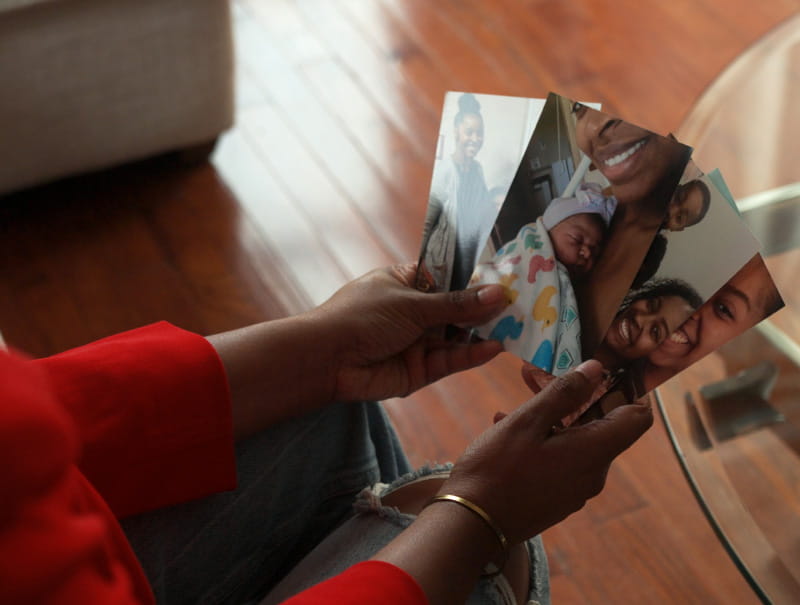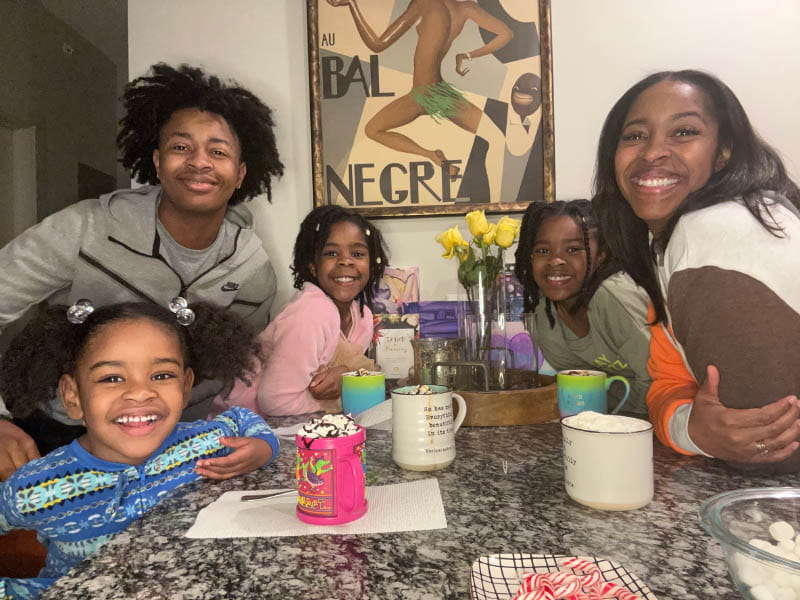Ohio mother goes into heart failure after fourth pregnancy
By Stefani Kopenec, American Heart Association News

Marian Dancy is a mother of four and a payroll specialist with a local law enforcement agency in Columbus, Ohio. Her fourth pregnancy was the easiest, giving her a third daughter to round out her family.
When the baby was about 6 months old, Dancy started getting winded and occasionally lightheaded. An episode where she momentarily lost her vision prompted a visit to her doctor.
"I kind of heard, 'You're young. You're healthy. It should pass. It'll be fine. Just check in with us if you start feeling worse,'" said Dancy, then 35.
It wasn't long before she did feel worse and scheduled a virtual appointment with a different physician in the group. They couldn't find anything wrong or any clues in her family medical history. There was a little virus going around. Maybe that was it.
Then came another flareup, her third in a month.
Her symptoms of fatigue and fluid buildup became more consistent and severe. Her ankles and feet would swell at night, her legs felt heavy and her muscles fatigued. She went to the emergency room.
After an electrocardiogram, or EKG, and other tests, Dancy left the ER with a pneumonia diagnosis, some antibiotics and an inhaler. That only seemed to make things worse.
Then one day she woke up to a little voice in her head saying, "If you don't figure this out today, this will be it."
Home alone and feeling like she was dying, Dancy called the nurse referral number on the back of her insurance card. She pleaded for an appointment. Most doctors were either booked or off because it was right before Thanksgiving. But she got lucky. There was an opening.
She found it so hard to walk that she had to crawl across the living room floor and to her truck. At the doctor's office, Dancy took quick, shallow breaths. The nurse took note of those, performed an EKG and then rushed out of the room to get the physician.
The doctor said it looked like heart failure. She had Dancy admitted to the hospital.
During those first few days, the toughest part for Dancy was being alone at night. Scary thoughts crept in. Things like what this meant for the rest of her life and how her being compromised might affect her children. She'd always been their superhero; seeing her like this in the hospital and having never spent a night away from each other, they were worried.

"You try to reassure them that it was going to be OK," Dancy said. "But I really didn't know myself. All I could think was, 'Is this the last place I'm going to be?'"
A heart ultrasound showed her heart's ability to pump blood to her body was extremely low. It's a measurement called ejection fraction, which normally may be between 50% and 70%. Doctors at the hospital told Dancy her ejection fraction was 15%.
About a week later, doctors diagnosed Dancy with peripartum cardiomyopathy, a rare form of heart failure most often diagnosed during the last month of pregnancy or five months or more after giving birth. The condition causes the heart chambers to enlarge and the muscle to weaken, leading to less blood flow. In the U.S., peripartum cardiomyopathy occurs in an estimated 1 in 1,000 to 4,000 deliveries.
"I can imagine there are a lot of people out there who aren't even aware that this thing could happen," said Bertha Willis, Dancy's mother. "Considering how women are so, I say, critical to almost everything that happens in our community, it's just important that they know these things."
Dancy was determined to make a full recovery. She took medication, ate a low-sodium diet, did breathing treatments and walked, little by little. When she could make it down the hospital hallway, she got to go home. It had been a little over two weeks.
She wore a defibrillator vest in case her heart stopped or needed to be shocked back into a normal rhythm. Within six months, that was replaced by a defibrillator/pacemaker implanted in her chest.
Dancy also took a holistic approach to her recovery. She put down the salt shaker. She worked out. She leaned on her faith. She began journaling and seeing a counselor. She focused on reducing stress and saying no.
"When I had to put myself first, it was uncomfortable. But I moved out of that discomfort, and it really ended up being really valuable for my family," she said. "Now I'm more intentional. Now when I'm spending time, I'm present."
Dancy, who got a divorce and whose children are 16, 10, 9 and 4, also learned to ask for help from others, like her mother, who lives within a 15-minute drive.

Four years later, Dancy's prognosis is good. Her ejection fraction of 46% is not quite into the normal range, but she rarely experiences symptoms.
"Even though I'm doing better physically now, none of us know how long we have on this earth. The present is what you have now. The future is great if you make it there. It really forced me to be intentional," she said. "If today is the last day, how did I live today?"
Stories From the Heart chronicles the inspiring journeys of heart disease and stroke survivors, caregivers and advocates.





